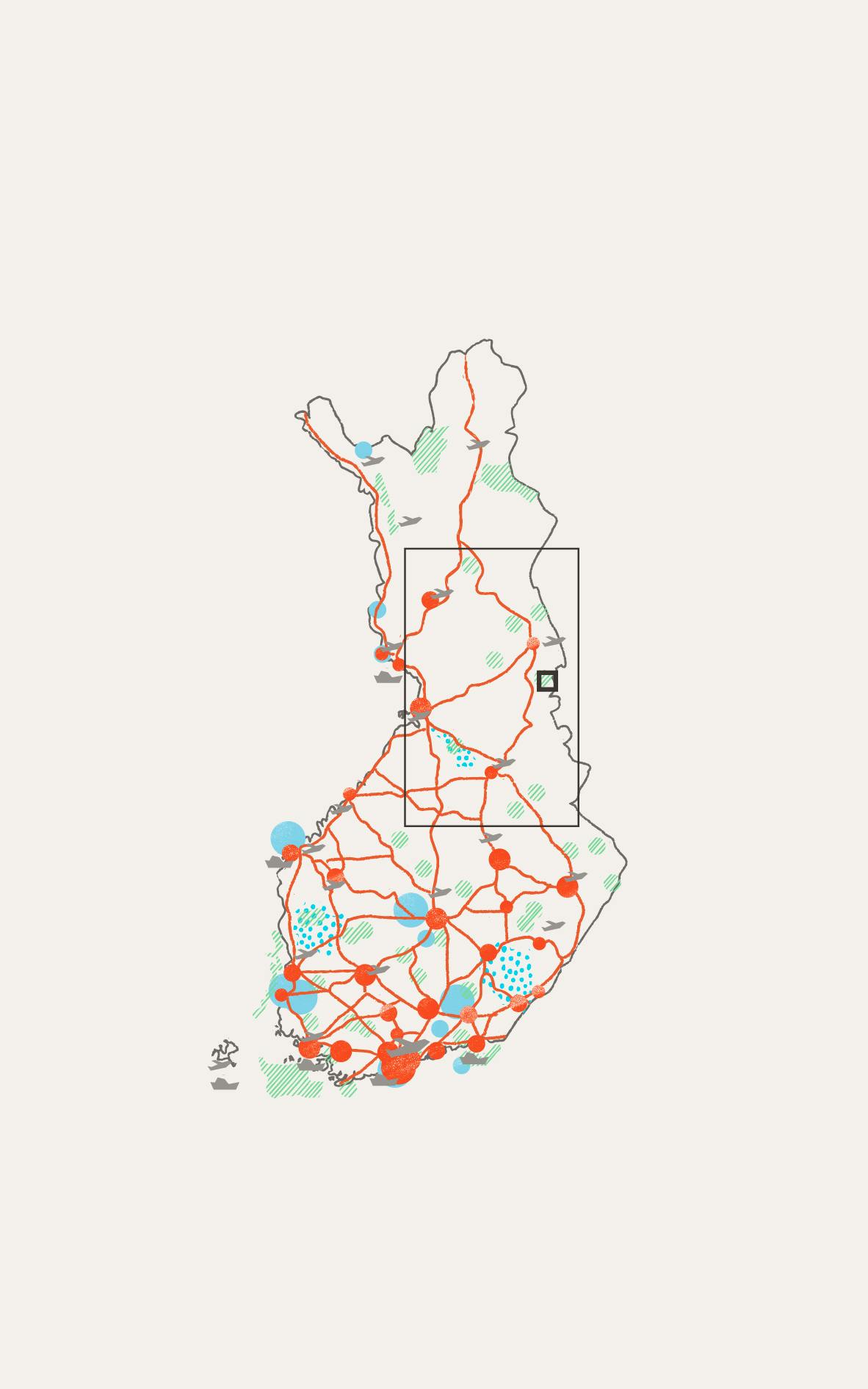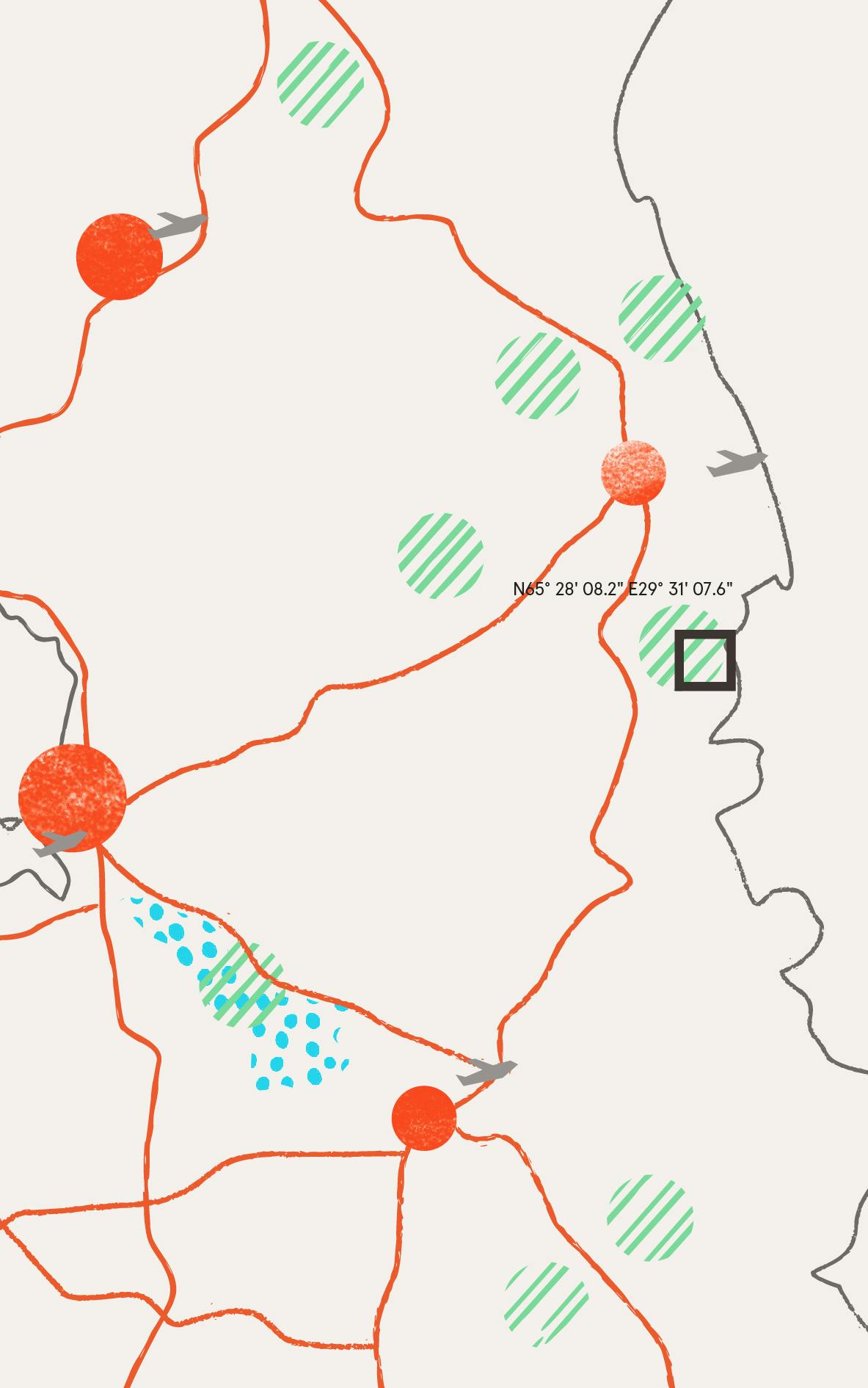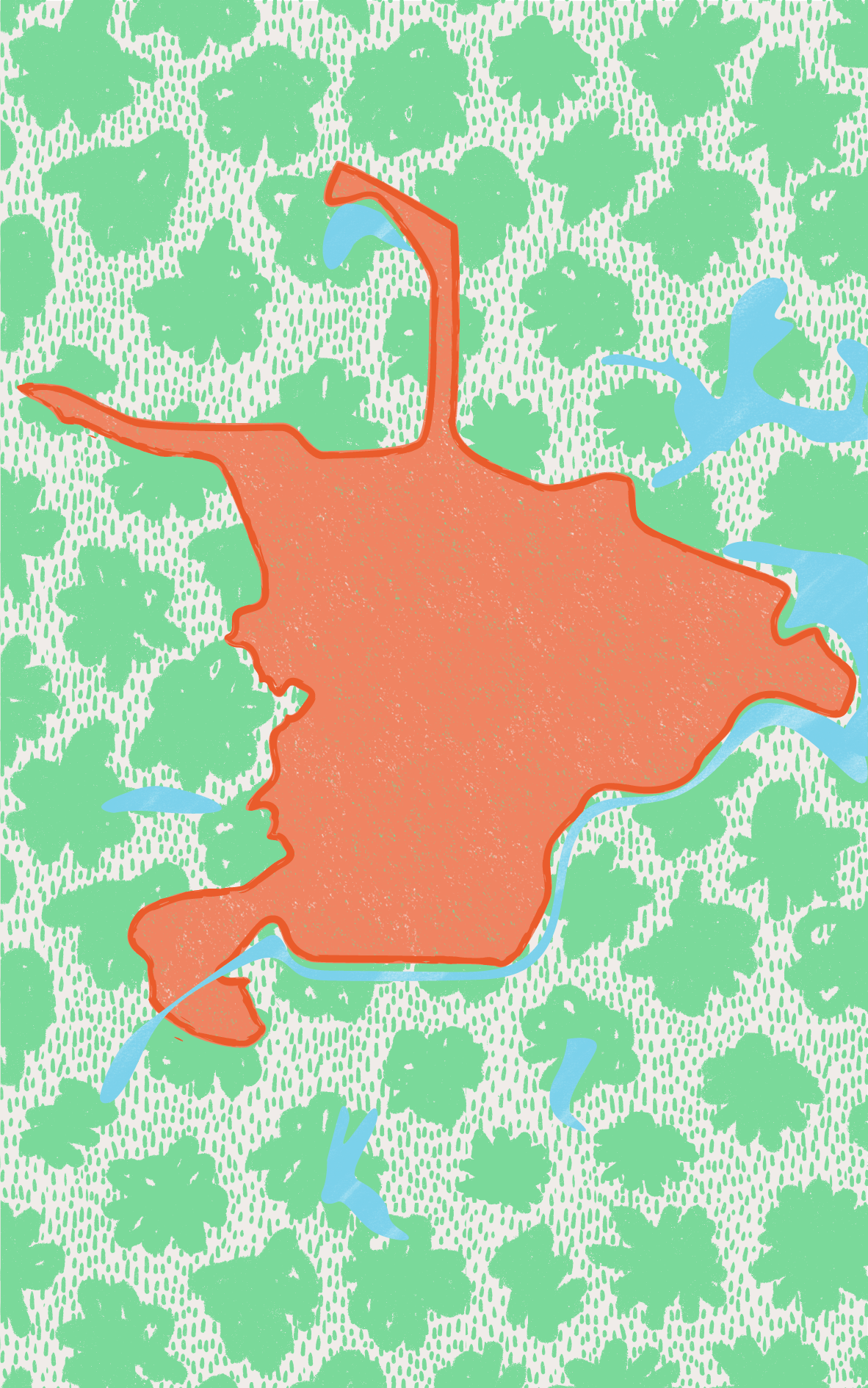The region of Hossa National Park has been inhabited for ten thousand years. In addition to hiking, biking or canoeing in nature, visitors can admire Stone Age culture such as rock paintings. The park was founded as a jubilee park for Finland’s 100 years of independence in 2017.

Cities and towns

National parks

UNESCO sites

UNESCO global geoparks

Main roads

Airports

Cruise ports

Case

Infrastructure

Grass

Trees / Forest

Water



How should a new national park be developed?
Hossa National Park was founded in 2017, although parts of the area had already been designated for hiking purposes. The park’s strategy suggests measures to attract visitors to stay longer, as for now most visitors only come for day trips – which is easy thanks to a bus connection. Surveillance programmes and counting devices have been taken into use to monitor how the number of visitors is affecting the natural landscape and endangered species.
Wonders of nature and prehistoric art just a bus ride away
The park was founded on state lands, which included Natura 2000 areas as well as state forestry lands. The hiking trails include a variety of accessible trails ranging from 400 m to 1.5 km that offer accessible boardwalks, fishing piers, rental huts and an open shelter, lean-to for resting. Interesting sites along the trail include the Värikallio prehistoric rock paintings, which can be admired from a viewing platform and accessed easily by a bridge and stairs. Similar structures – floating platforms built with pontoons and steel mesh, stairs made of stone and metal, and wooden and wire-hanging bridges – are found in the narrow rock canyon of Julma-Ölkky lake. A bus connection from the closest town, Kuusamo just 30 minutes away was created after the park gained national park status.
Key facts
- Location
Hossa, Municipality of Suomussalmi, Region of Kainuu in Northern/Eastern Finland
- GPS points
N65°28'02.6" E29°31'06.7"
- Protection Framework
National park
- Estimated number of visitors a year
111,300 in 2020 (96,500 in 2019)
- High season
2000 visitors per day on average
- Low season
1000 visitors per day on average
- Project Owner
Metsähallitus / the state of Finland
- Designer
Metsähallitus
- Year of construction
2017-
- Materials
Wood, metal, stone
- Project budget
2.5 M euros
- Prizes/Awards
Finland’s hiking attraction of the year 2011, theme water routes